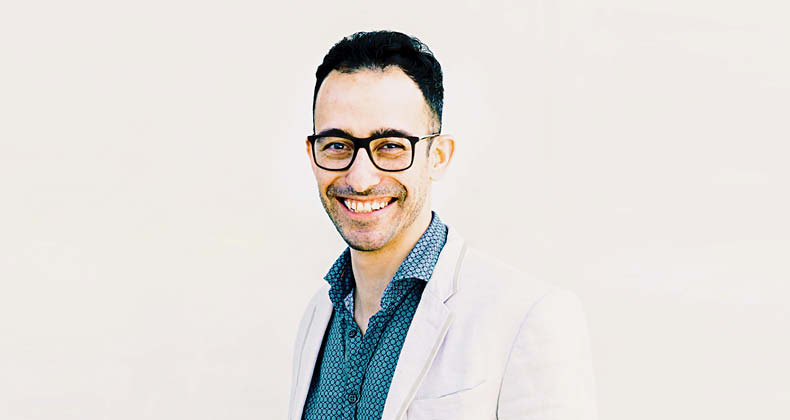How a new wearable device is helping outdoor workers stay sun smart
At least two in three Australians will be diagnosed with skin cancer before the age of 70. That’s despite decades of sun-smart campaigns educating Australians on the dangers of UV rays in our country. St. George Kick Start finalist Dr Reza Behi, founder and CEO of Metasense, reveals how his company is using new UV-sensor technology to improve skin cancer prevention for millions of Australians who work outdoors.
4 minute read
What’s in this article:
- Outdoor workers are at risk of UV overexposure that causes skin cancer and eye damage.
- SafeSpot is a new wearable device that senses UV exposure in real time.
- It is currently in a pilot trial at one of the largest construction companies in Australia.

Fighting for a sun smart Australia
Exposure to UV radiation from the sun is a major cause of skin cancer in Australia. And factors related to climate change including ozone depletion, global warming and ambient air pollution are expected to amplify the issue over the next few decades.
About 34,000 skin cancers in Australia are directly attributable to workplace UV exposure annually in Australia according to the Cancer Council National Sun Protection Survey. And despite the safety legislation that requires employers to provide safe working environments, only half of the total of 6,349 adult Australians surveyed said their employer had a sun protection policy in place.
That’s the problem Dr Reza Behi, founder and CEO of Metasense, hopes to help solve for many of Australia’s estimated 2.5 million outdoor workers.
Skin cancer prevention in real time
That’s why Dr Behi has developed SafeSpot — a wearable device that monitors your real-time UV exposure. Suffering between three and 10 times more UV exposure than indoor workers, he believes SafeSpot will help outdoor workers and businesses better manage this risk.
“Our mission is to help minimise the overexposure to UV radiation that has led to skin cancer and eye damage for so many outdoor workers,” Dr Behi explains. “SafeSpot is a user-friendly tool powered by the latest patented UV sensor technology. We’ve also developed a cloud-based analytics platform that organisations can use to track employee UV exposure with real-time overexposure alerts.”
Set to their eye colour, skin colour and sensitivities, the device constantly reads any UV rays you’re exposed to, including those reflected from the water, under clouds, and even through glass.
“When the user has had their dose of sun for the day, SafeSpot sends alerts via an internet-connected software platform to help the worker and their manager keep on top of their skin and eye health.”
Staying sun smart in the 21st century
“Sun safety solutions traditionally involve sunscreen and personal protective equipment. However, overreliance on these can result in Vitamin D deficiency, which has been declared at a pandemic level around the world,” Dr Behi explains.
A technical expert in the fields of nanoengineering, multifunctional nanomaterials, energy technology, nanobiosensors and wearable sensors, he came to Australia in 2015 after studying at the prestigious KTH Royal Institute of Technology in Stockholm.
After exploring new cutting-edge cancer diagnostic technologies as part of his PhD at Sydney University, Dr Behi was inspired to develop SafeSpot. He says SafeSpot not only helps outdoor workers stay sun smart, but also ensures they maximise the benefits of sun exposure while mitigating the risks. “It allows outdoor workers to get a healthy dose of sun while avoiding dangerous overexposure.”
Currently under a pilot evaluation with one of the largest construction companies in Australia, the waterproof device can be integrated into most personal protective equipment.
First Australia, then the world
Following the pilot program, Dr Behi says the company’s goal is to acquire five to 10 new customers within the next six to nine months.
“That’s an ambitious target in the current economic climate, but I believe it’s achievable. SafeSpot has many applications outside of the construction industry, and we’re seeing interest from several different industries that are concerned with improving workplace health and safety.”
Dr Behi also sees potential to grow beyond Australia’s borders and will look to take SafeSpot to overseas markets in the US and Europe.
“We envisage that our product will grow beyond the local market,” he says. “UV overexposure is a global problem. The US, for example, has the highest number of diagnosed skin cancer annually, and in Europe the rate of skin cancer is tipped to double in the near future, mainly due to the effects of global warming.”
Conclusion:
Kick starting sun safety
Moreover, to take out the winning spot at the St. George Kick Start program, the 2020 finalist believes
it’s the exposure associated with the program that will be most valuable to his company.
“I found out about St. George Kick Start through an accelerator I am involved with through Sydney University,” he says. “One of our challenges is building awareness around the risks of skin cancer for outdoor workers and how SafeSpot can assist site managers to solve this. Being part of this will help us spread that message.”
Metasense is a Kick Start 2020 finalist. To learn more about other finalists in this category, visit the St. George Kick Start hub.